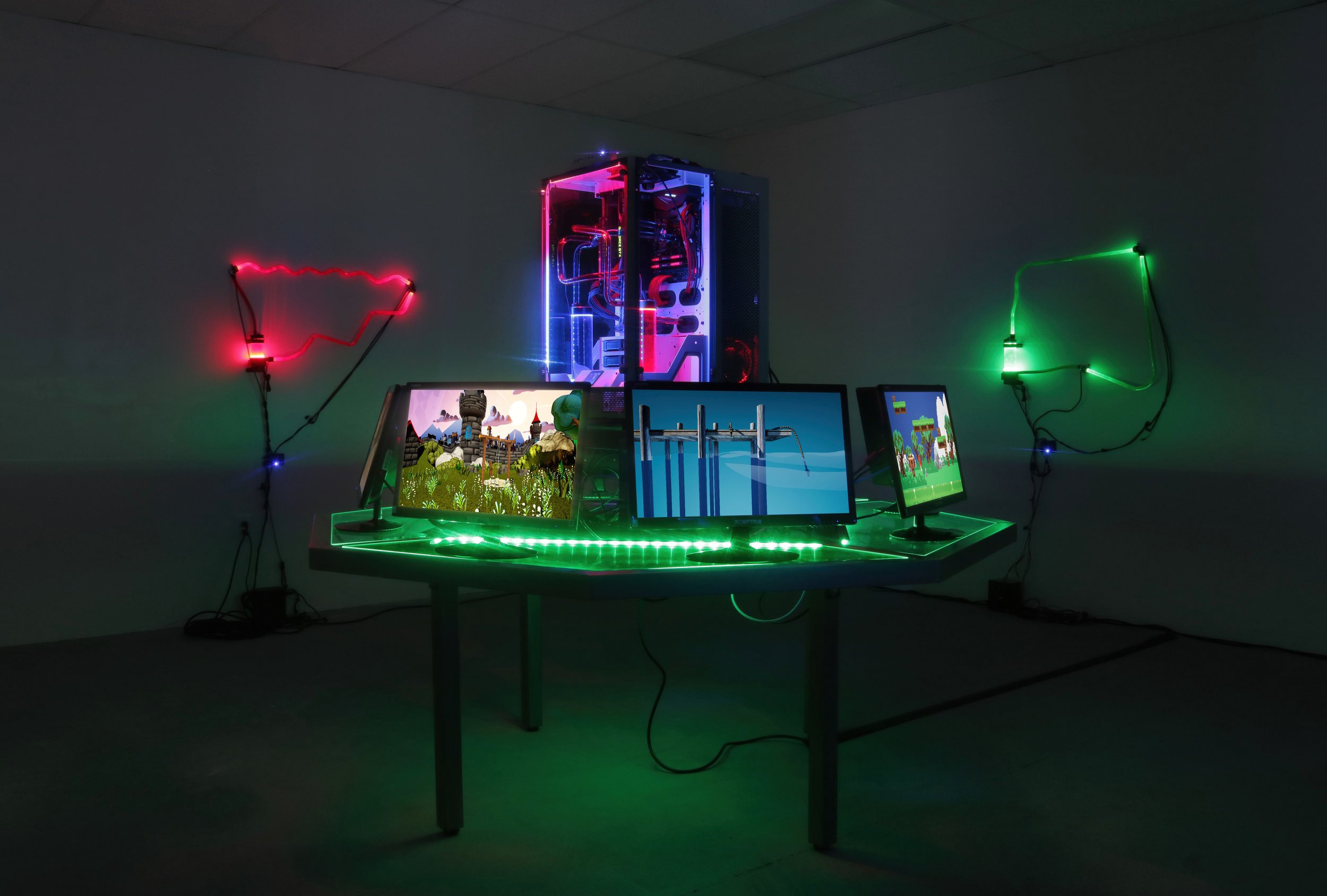VRAL is currently showcasing Filip Kostic’s 2019 game video Filip Kostic VS. Filip Kostic in a brand new format. Today, we discuss Open Loop (2017), which explores the concept of agency and determinism through the use of an AI character trapped in a repetitive cycle.
PATREON-EXCLUSIVE CONTENT
〰️
PATREON-EXCLUSIVE CONTENT 〰️
Open Loop is a massive, real time installation by Filip Kostic which examines the notion of agency and determinism through the use of an AI character stuck in a repetitive - and ultimately nihilistic - sequence. Here, the AI character’s actions and behaviors unfold in real-time, mirroring the interactivity found in video games and digital environments. The original installation at Roger’s Office gallery in Los Angeles utilized eight monitors in order to create an immersive and engaging visual experience for viewers, evoking the “man cave” milieu of hard core gamers. The custom-built computer functioned as the central nervous system of the installation. This was not just any computer: it was meticulously designed and crafted to meet the high computational requirements of the AI simulation. It sported neon lights, a hallmark of gaming PCs, serving both functional and aesthetic purposes. In Open Loop, the neon lights symbolize the intersection of art and technology, blurring the boundaries between gaming and artistic expression. The gaming PC also has a transparent cabinet, allowing users – in this case, Kostic – to showcase the internal components, e.g., powerful GPUs. In an upcoming article, we will discuss Kostic’s fascination for the custom built pc as a modern day sculpture. In the context of the installation, these transparent cabinets invited viewers to contemplate the inner workings of the AI simulation and the technology that drives it.
As previously mentioned, Open Loop investigates the role of agency within AI systems. In this context, agency refers to the ability of an AI program or ”agent“, to make decisions based on its programming or training data. However, in Open Loop, the AI ”character“ lacks agency, as it is trapped in a predetermined, repetitive cycle of actions, unable to exercise free will. In this context, these actions or behaviors involve walking, dying, and respawning, all occurring devoid of any external control.
Open Loop was originally conceived and developed in 2016, at a time when artificial intelligence was on the cusp of gaining cultural prominence and mainstream adoption. Back then, the artist was studying the design of Non-Player Characters (NPCs) in Unreal Engine and became fascinated by the limits of programmed behaviors. In many ways, he was ahead of his times: behavior trees in NPCs can now be seen as viral trends in livestreams and tiktoks where individuals mimic NPC behaviors, like Pinkydoll. His further research led him to explore the concepts of open and closed loop systems…
Matteo Bittanti
Works cited
Filip Kostic
Open Loop
real-time AI simulation, eight monitors, custom built computer, custom GPU and CPU cooling loops, steel and acrylic structure, installed at Roger’s Office in Los Angeles, California, 2017
All images and videos courtesy of the Artist
This is a Patreon exclusive content. For full access consider joining our growing community.





